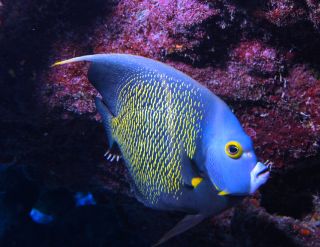
Valentine’s day is behind us and, for many, its passing comes with a sigh of relief. As I am currently single I wasn’t pressured into participating in
the holiday's annual, and largely empty, gestures. But I did observe many men and women dutifully purchasing trinkets, candy, or flowers from the local grocery store to bring home to their partners as symbols of their affections.
I think what I find dismaying is that the holiday condenses our romantic rituals into a singular, annual event. In my book, Wild Connection: What animal courtship and mating tell us about human relationships, I consider how we might be inspired to change our perceptions about our own relationship behavior by looking through a biological lens and exploring how animals engage in relationships with each other.
One key difference when it comes to rituals is that when other species form long-term bonds, they have daily behaviors that serve to maintain the pair bond and demonstrate continued commitment to the partnership.

Source: su neko / Flickr / CC-BY-SA-2.0

Source: Pomacanthus paru (French angelfish) by Albert Kok / Wikimedia Commons / CC-BY-SA-2.5
I suppose that French angelfish twirling is akin to dancing, but various species of grebe, a group of freshwater birds, have some of the most elaborate water dancing rituals around. They glide and rush through the water, almost lifting themselves out, necks arched seductively. Tango, anyone? But at the end there is no exchange of roses, simply reeds.
Other species' pairs spend all their time together; others go their separate ways for part of the day, or part of the year. The underlying constant? A set of positive, relationship-affirming rituals that take place consistently and daily.
When we humans come home from a long day at work do we twirl around each other? No. Many of us complain about our day, instead of celebrating that we've reunited with our partner at the end of a day in "the wild." We do this despite research that clearly shows that successful couples have as many as 20 daily positive interactions for every negative one.
Other animals spend a considerable about of energy singing, dancing, twirling, cuddling, massaging, exchanging "gifts," and communicating with their partners. The only time they stop putting in all this effort is when the relationship is ending. When one partner neglects to invest, that is the cue to terminate the partnership.
I think the lesson for us is that if you want a happier, healthier, long-lasting partnership, then in a very real and concrete way every day has to be Valentine’s Day. The great part for us is that, unlike in other species, there is no one ritual that is "right." It could be as simple as helping to carry a bag, or rubbing your partners shoulders after they come home from a long day in the office. But there is no escaping the fact that it takes energy, thoughtfulness, and time. Prairie voles, grebes, French angelfish, and siamangs aren’t inattentive to their relationships and they don’t make excuses.
Neither should we.

No comments:
Post a Comment